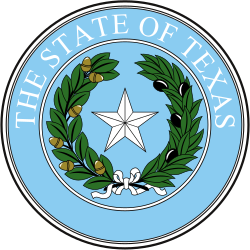| |||||||||||||||||
| |||||||||||||||||
 | |||||||||||||||||
| |||||||||||||||||
The 1940 United States Senate election in Texas was held on November 5, 1940. Incumbent Democratic U.S. Senator Tom Connally was re-elected to his third term in office, with only minor opposition in the Democratic primary and general elections.
| |||||||||||||||||
| |||||||||||||||||
 | |||||||||||||||||
| |||||||||||||||||
| Elections in Texas |
|---|
 |
The 1940 United States Senate election in Texas was held on November 5, 1940. Incumbent Democratic U.S. Senator Tom Connally was re-elected to his third term in office, with only minor opposition in the Democratic primary and general elections.
| Party | Candidate | Votes | % | |
|---|---|---|---|---|
| Democratic | Tom Connally (incumbent) | 923,219 | 84.83% | |
| Democratic | Guy B. Fisher | 98,125 | 9.02% | |
| Democratic | A.P. Belcher | 66,962 | 6.15% | |
| Total votes | 1,088,306 | 100.00% | ||
Twenty nine counties failed to report their results to the Texas Secretary of State in time to be canvassed, so their results are not included in the official vote totals. [3]
| Party | Candidate | Votes | % | ±% | |
|---|---|---|---|---|---|
| Democratic | Tom Connally (incumbent) | 978,095 | 94.24% | ||
| Republican | George I. Shannon | 59,340 | 5.72% | ||
| Communist | Homer Brooks | 408 | 0.04% | ||
| Total votes | 1,037,843 | 100.00% | |||
| Democratic hold | |||||
{{cite book}}: ISBN / Date incompatibility (help){{cite book}}: ISBN / Date incompatibility (help)